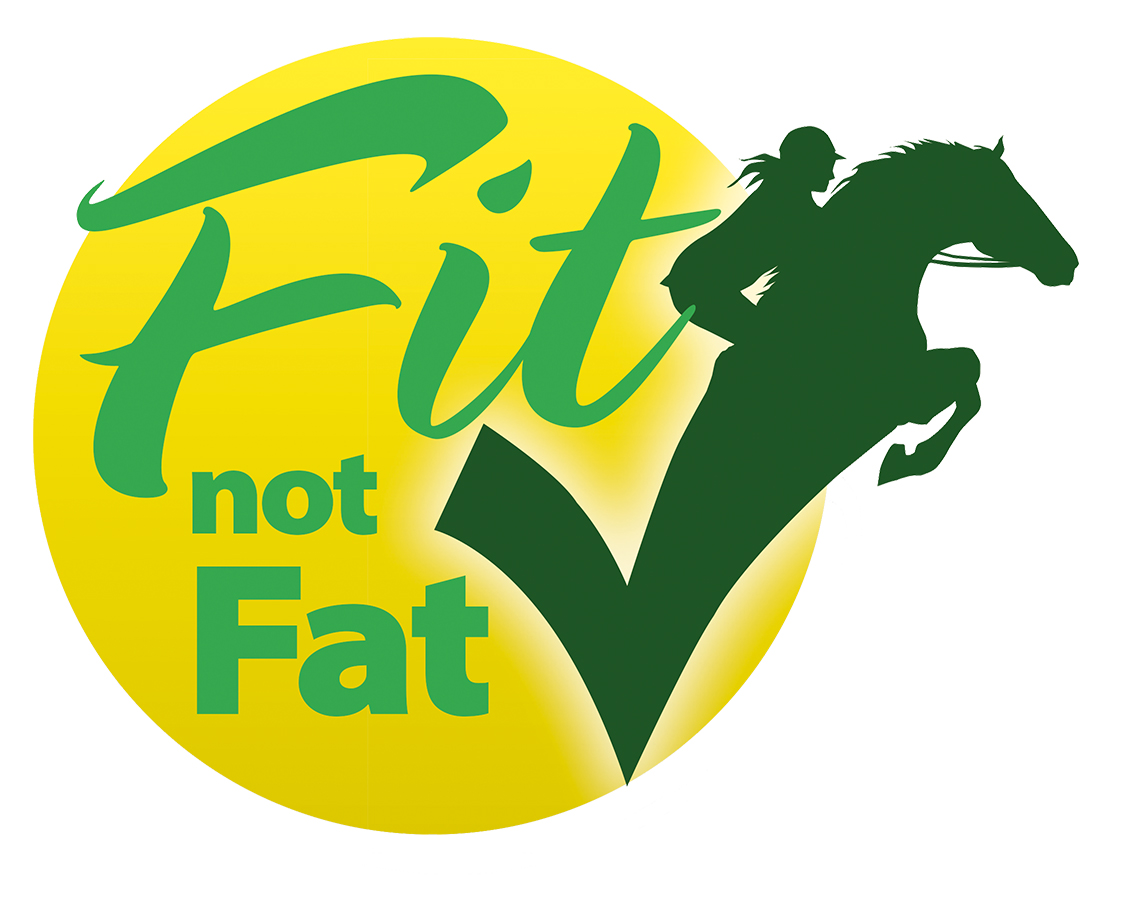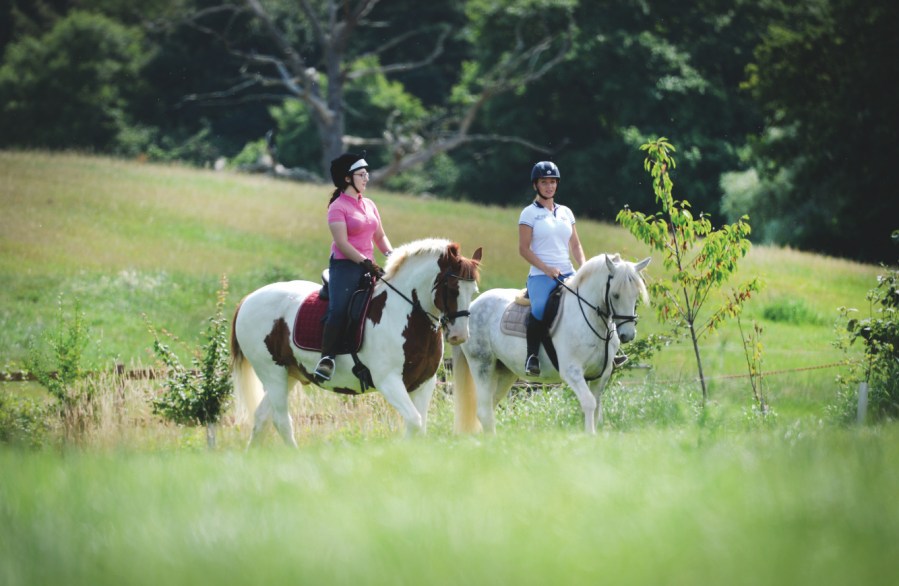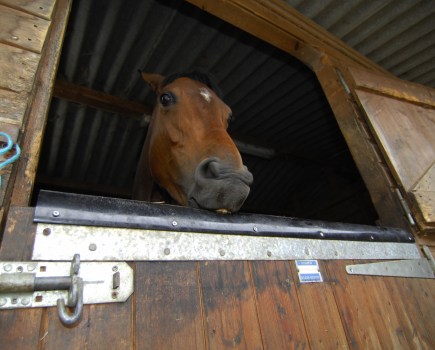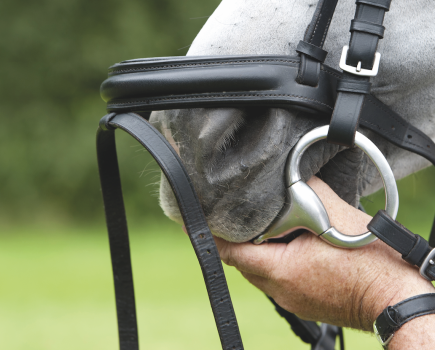It can be difficult to tell the difference between fat and muscle when looking at our horse or pony, but identifying them from one another is essential in preventing our much-loved equines becoming overweight — and it’s a vital part in helping them to be #FitnotFat.
A horse’s body contains approximately 700 muscles which they rely on to control their movement, but they can also contain a large amount of fat tissue which can cause major health problems including laminitis and equine metabolic syndrome (EMS). So, how do we know which one is which?
What is muscle?
The difference between muscle and fat is that muscle is a distinct organ that grows around the horse’s body, and each one has a name for the area in which it is found. Every horse will have the same muscles in the same places, but they will vary in size depending on how much they are used. So, for example, the topline muscles along the top of the neck and the back, if used correctly with the horse working in the correct outline, will increase in size. A horse that works in a hollow outline will increase the size of the muscles underneath its neck, and as a result under-use and lose the muscle mass in the topline muscles.
There is variation with breed as well. Some breeds are genetically programmed to have bigger muscles in certain places than others.
What is fat?
Fat is less distinct, and fat deposits tend to vary more between individuals. Again, there will be some genetic, breed-specific programming on how those individuals lay down fat, but on the whole, it is a lot less rigid in how distinct it is.
However, you do have obvious places where fat tends to build up easily in horses, such as the crest, the rump and the covering over the withers and the ribs. They also carry a lot of intra-abdominal fat, which is fat tissue that sits in between all the organs in the abdomen.
How can I tell the difference?
Telling the difference between fat and muscle can be tricky, but the location, size and shape of the tissue you are feeling will give you some indication of whether it’s fat or muscle.
The other important thing is that muscle is able to contract and relax, so it can be either toned or flaccid (soft). Muscle should look and feel firmer, and you should be able to feel it contract when it’s under tension and wobble when it’s relaxed.
Fat, on the other hand, will never be able to do that. Fat tissue can feel soft, unless it’s become over-filled with fat tissue when it then turns hard and almost like cellulitis — lumpy, bumpy fat that will ripple as it moves.
On the whole, muscle is heavier than fat — it is denser with more tissue and more collagen, and will have blood vessels and nerves, whereas fat tissue is largely fat stored in cells. There is a blood supply to fat but not a lot else.
Is he getting fitter or fatter?
Horses who are overweight will have muscle under the fat and if they are kept in work, the muscles will probably stay the same size that they were, so any weight loss from dieting a horse will be from fat loss.
You should start to see those fat deposits — at least, the visible ones on the outside of the body — become smaller and softer. That is why it is important when body condition scoring horses that you not only look at them, but you also feel them, and do it over a period of time, because then you’ll start to see the changes.
If a horse doesn’t have a huge amount of fat tissue and is being worked harder, then it will likely start to put weight on, much like a young horse who is growing and developing musculature after being broken in and starting his early training — he’ll put down more muscle mass and gain weight.
This type of weight gain will be a lot more subtle and much slower and steadier than a horse gaining weight through an increase in calories but not work, and laying down fat tissue. A horse who is getting fat will start developing crest fat, shoulder fat, rib fat and rump fat, which you can see and feel.
You might now stop feeling the ribs under the skin because the fat is sitting between the skin and the bone, so there are lots of signs that fat is causing that weight gain.
What is intrabdominal fat?
An important point is that the intrabdominal fat, which sits in between the organs in the abdomen, is sometimes laid down first before a horse starts to look visibly fat on the outside. This means they start to get a slightly bigger abdominal appearance first.
Once those fat reserves become saturated, only then will these individuals start putting down visible fat issues that we can see on the outside.
That’s why, when horses have lost the visible fat, they can still have intrabdominal fat. Fat cells that are full of fat aren’t just sitting there doing nothing — they are acting like a little organ in the horse’s system, releasing cytokines, which are cellular chemicals, into the bloodstream, causing insulin dysregulation and subsequently laminitis.
 Have you heard about Your Horse’s #FitNotFat campaign, which is supported by Dodson & Horrell? Equine obesity is an enormous welfare problem and we’re on a mission to provide owners and riders with the knowledge, skills and information you need to keep your horse in tip-top health. It could be life saving! Find out more
Have you heard about Your Horse’s #FitNotFat campaign, which is supported by Dodson & Horrell? Equine obesity is an enormous welfare problem and we’re on a mission to provide owners and riders with the knowledge, skills and information you need to keep your horse in tip-top health. It could be life saving! Find out more









